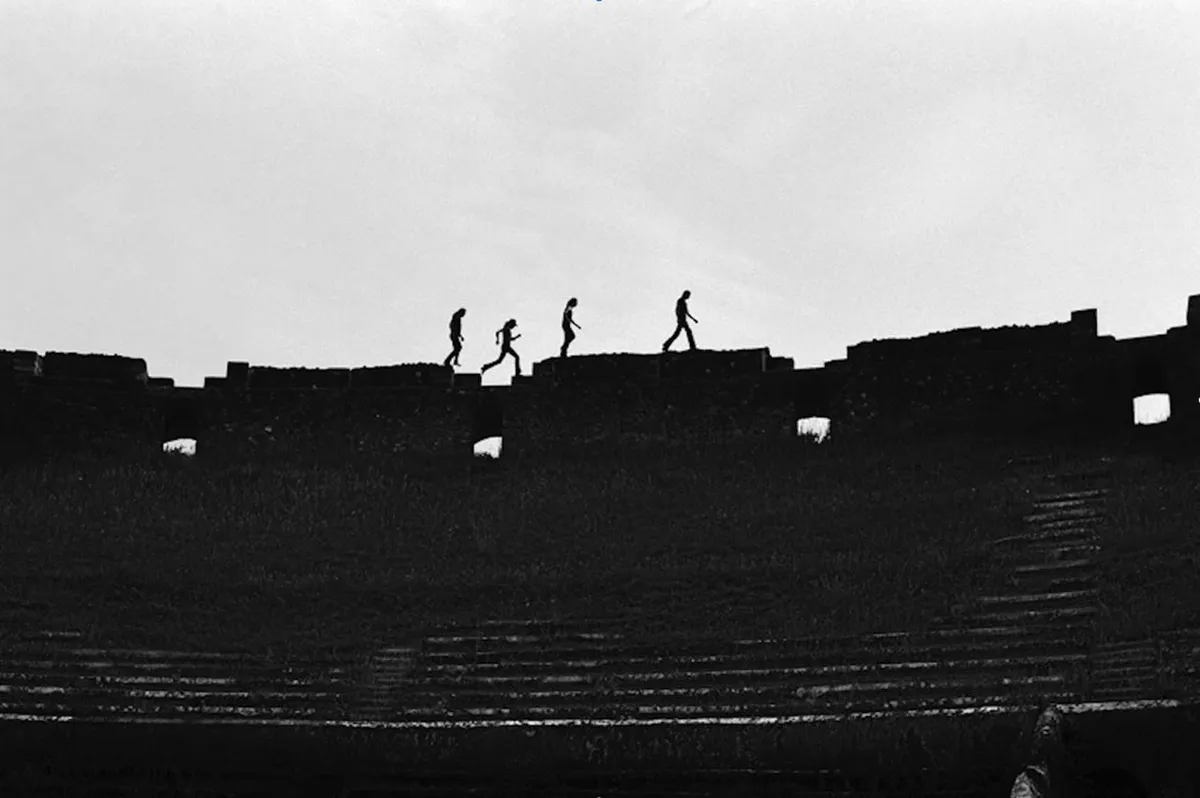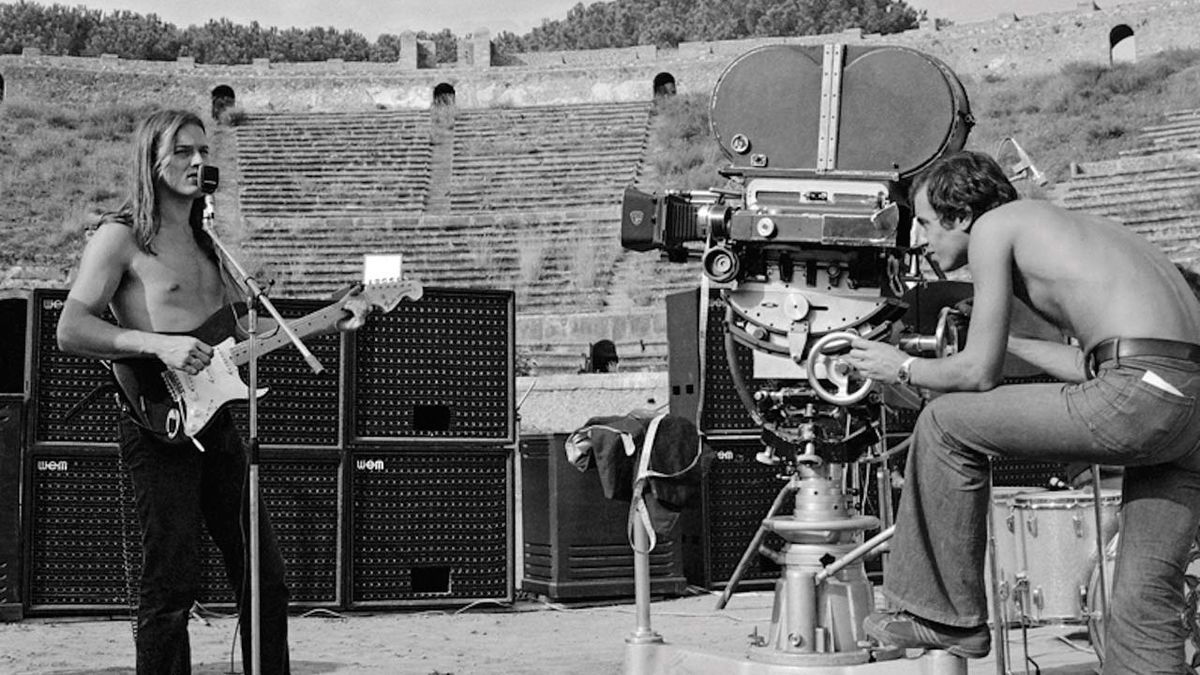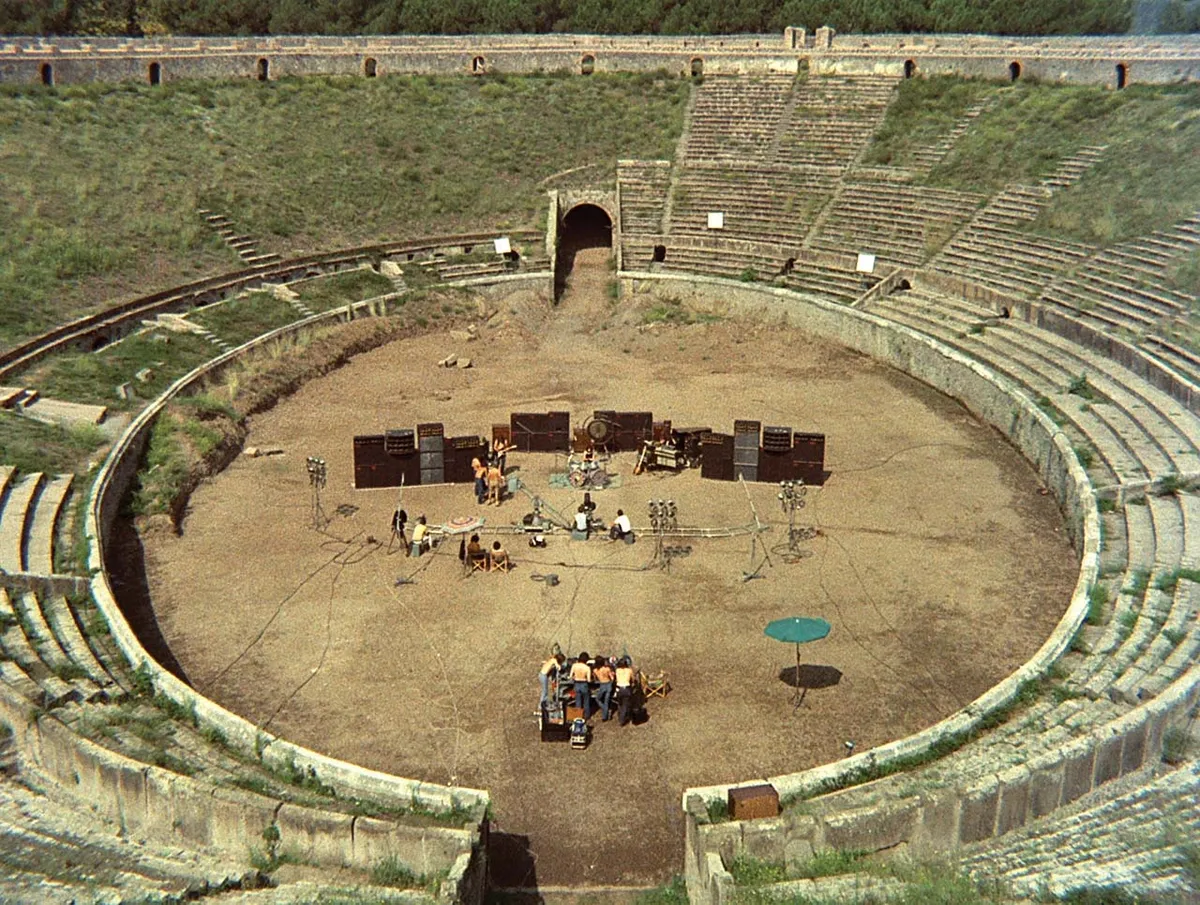Ashes to Echoes: How Pompeii Launched Pink Floyd Into the Stratosphere

Pink Floyd have recently re-released 'Pink Floyd at Pompeii: MCMLXXII', a stunning 4K remaster of their iconic concert film. Originally released in 1972 — now newly restored by Steven Wilson. Alongside the film comes a streaming reissue of the album, letting new generations experience the band’s most atmospheric performance in a whole new light.
Originally filmed in 1971, the concert saw Pink Floyd play to an audience of none in the ancient amphitheater of Pompeii. Aside from a small film crew, a few shirtless hippies, and some curious local kids who snuck in, it was just the band and the ghosts of history. The result? Something timeless. Songs like 'Echoes' now sound punchier, and the full, uncut 12-minute version of 'A Saucerful of Secrets' feels even more otherworldly, a trip that’s somehow gotten stranger with age.
Captured just before the band would ascend to global superstardom and sell over 45 million albums, Live at Pompeii offers a snapshot of Pink Floyd at their most exploratory. It was a band still evolving carving out a new identity in the wake of founding frontman Syd Barrett’s departure yet fully immersed in progressive experimentation.
The band didn’t go into this with stadium-level resources. They used their regular touring equipment, including a mobile 8-track recorder from Paris, later upgraded to 16-track in post. This wasn’t a mega-production it was raw creativity executed with cinematic vision.

Contrary to myth, the idea for the film wasn’t born from acid-drenched brainstorming or avant-garde performance art. Director Adrian Maben originally pitched a more conventional idea: Pink Floyd’s music set against images of surrealist artwork by Magritte and de Chirico.
The band passed. Then, during a summer holiday in Naples, Maben visited Pompeii and lost his passport. Retracing his steps through the ancient ruins, he returned to the amphitheater and, struck by the silence and natural acoustics, imagined Pink Floyd performing there.
Filming the band without an audience, Maben thought, would be a poetic counterpoint to concert films like Woodstock or Gimme Shelter, where the crowd played just as big a role as the music. With the help of Professor Carputi at the University of Naples a devoted Floyd fan, Maben secured access to the venue for six days that October. A “fairly steep” fee got them in.
From October 4–7, 1971, the band filmed performances of 'Echoes', 'A Saucerful of Secrets', and 'One of These Days'. While the material leaned heavily on their new album 'Meddle', Maben also insisted on including older, visually intense tracks like 'Careful With That Axe, Eugene'.
The songs were recorded live, but this wasn’t a traditional concert setup. Tracks were captured in segments; the band played to the amphitheater’s natural reverb and reviewed playbacks on headphones. The environment stripped of crowd noise, stage chatter, and ego allowed the music to breathe and evolve in haunting new ways.

Despite its unconventional format, Live at Pompeii went on to become one of the most revered concert films of all time. The original hour-long cut premiered at the Edinburgh Film Festival in 1972 though Maben only found out after spotting a newspaper blurb the next day. Later that year, 3,000 fans showed up for a screening at London’s Rainbow Theatre.
But Maben wasn’t done. He felt the film lacked something essential a sense of who Pink Floyd were behind the music. With Roger Waters’ blessing, Maben was granted access to the band as they recorded 'The Dark Side of the Moon' at Abbey Road in October 1972. That footage was edited into the final 1974 version of Live at Pompeii, giving it the layered texture of both a concert film and a studio documentary.
What makes Live at Pompeii brilliant and unique is that it captured a band on the brink of greatness, doing something no one had done before. The Beatles had toyed with similar ideas for 'Let It Be' — musing about concerts in ancient ruins or on ships but ultimately ended up on a London rooftop. Pink Floyd actually did it, and while the Beatles unraveled, Floyd soared into their golden era.
From there, Pink Floyd would redefine what a rock band could be. Starting with 'The Dark Side of the Moon' in 1973 — a landmark album that didn't just sound different, it thought differently. Featuring masterpieces like 'Time', 'Us and Them', and 'Brain Damage', the band wove existential angst, mortality, greed, and madness into sonic perfection. With seamless transitions between tracks and groundbreaking use of tape loops, spoken-word segments, and analog synths, it became a blueprint for the concept album. The heartbeat that opens and closes the record isn’t just a motif it’s the pulse of the human condition. The album stayed on the Billboard charts for a staggering 741 weeks, proving that deeply philosophical music could still go multi-platinum.
In 1975, they followed up with 'Wish You Were Here', a more introspective and emotionally resonant album — a heartfelt tribute to their estranged founder Syd Barrett, who had descended into mental illness. The sprawling 'Shine On You Crazy Diamond' bookends the album with haunting beauty, its slow-burning intro acting like a candlelit vigil. The title track, 'Wish You Were Here', is a universal lament not just for Barrett, but for the loss of innocence, authenticity, and connection. Tracks like 'Welcome to the Machine' and 'Have a Cigar' also reveal the band’s growing disenchantment with the music industry, an irony given their rising fame.
Then came 1977’s 'Animals', a snarling, dystopian beast of a record. Inspired by George Orwell’s Animal Farm, the album channels the band’s political and social frustration into allegory. 'Dogs' is a 17-minute odyssey of paranoia and betrayal, a savage dissection of corporate ambition. 'Pigs (Three Different Ones)' takes aim at hypocrisy and authoritarianism famously calling out figures like Mary Whitehouse while 'Sheep' flips the biblical script, turning passive followers into revolutionary rebels. The guitar work was blistering, the lyrics venomous, and the mood unrelentingly bleak. A stark contrast to the spacey optimism of earlier Floyd.
Finally, in 1979, 'The Wall' arrived a rock opera so vast and uncompromising, it nearly tore the band apart in the process of creating it. Built around the fictional character “Pink,” it’s a psychological descent into isolation, abandonment, and madness. Each “brick” in the wall represents trauma — from overbearing teachers ('Another Brick in the Wall, Part 2') to war, fame, and emotional repression. 'Comfortably Numb' remains one of the most powerful depictions of mental detachment in music history, bolstered by David Gilmour’s soaring guitar solo. 'Hey You' and 'Run Like Hell' extend the theme into despair and paranoia. It was theatrical, conceptual, and deeply personal and yet, entirely universal.
Throughout the decade, Pink Floyd remained bold, introspective, and deeply cinematic. Live at Pompeii wasn’t just a milestone it was the moment they crossed the threshold from underground experimenters to enduring icons.
It all began in Pompeii a city silenced by volcanic ash nearly 2,000 years ago. Centuries later, that same silence became the perfect canvas for one of rock’s most daring acts. Live at Pompeii wasn't just a concert; it was a creative eruption a seismic shift that launched Pink Floyd into the stratosphere.

Amid the crumbling ruins of a lost civilization, the band found something eternal: a space unbound by time, audience, or convention, where music could echo off ancient stone and into the future. In that moment, they weren’t just performing, they were redefining what performance could be. Pompeii became less of a location and more of a symbol, the beginning of an era where Pink Floyd didn’t just make albums; they built sonic monuments.